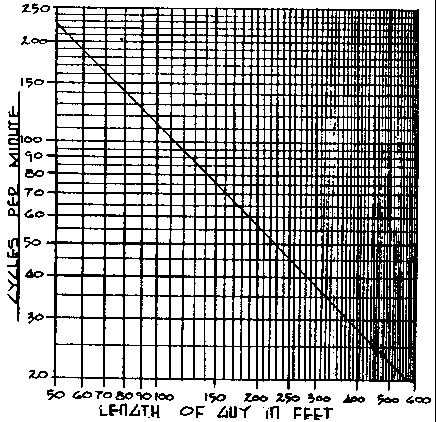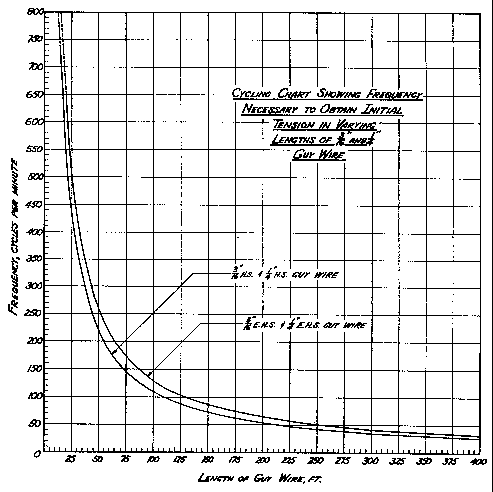

Info copied and extracted from the
Motorola/Rohn Tower
Installation Manual
published in the 60s-70s.
The initial guy wire tension on guyed antenna towers is very important. There are fancy (and expensive) tensiometers available to accurately measure this tension but they are not usually available to amateurs who want to get their tower installation "right". I am providing here a simple technique that requires no equipment beyond your hands and a good brain. It was the technique recommended by Rohn Mfg to be used when tensiometers were not available and has been copied from a tower installation manual distributed by Motorola in the 1970s.
The recommended initial tension in guy wires is 10% of their ultimate tensile strength. There are two different grades of steel used for good guy line (clothes line does not count), HS (high strength) and EHS (extra high strength). The Rohn manual gives the following info on 3/16 and 1/4 in cable.
| Size & Grade | Tensile Strength lbs |
Initial Tension lbs |
|---|---|---|
| 3/16" H.S. | 2850 | 300 |
| 3/16" E.H.S | 3990 | 400 |
| 1/4" H.S. | 4750 | 500 |
| 1/4" E.H.S. | 6650 | 700 |
The tension checking method detailed in the Rohn handbook is as follows:
To tension guy wires, each should be given a side-to-side motion by pushing on the guy. When the guy is swinging in a single loop, begin counting the cycles. It may be necessary to maintain the swing by pushing lightly on the guy while counting. To increase the frequency of the swing, increase the tension in the guy wire; to decrease the frequency, decrease the tension. (Little or no wind should be blowing).
There are two charts in the Rohn handbook, one with a log display and one with linear coordinates.


You may wish to download a high resolution copy of the Rohn handbook page showing the above linear chart. To get a proper hardcopy print, copy it to a suitable graphics editor such as Paint and print from there.
A further reference to this "vibration" method of guy tension measurement appears in the National Association of Broadcasters (NAB) Engineering Handbook (fifth edition) which gives the following general formula:

Where:
T = tension in lbs.
L = Length of guy wire in ft.
The NAB handbook further points out that this method is suitable only where the guy is of a uniform cross section and there are no insulators or other heavy objects mounted on the guy wire.
I hope that this information is useful. It is provided as a service but is not guaranteed as to accuracy. It is merely a copy of information published by others. You are solely responsible for any application of this information. If in doubt, consult a structural engineer or other knowledgeable person.
Back to the
Circuits Index
or
Back to
Burt's Home Page
©1998 Burton Lang - All Rights reserved. Revised:04/06/98